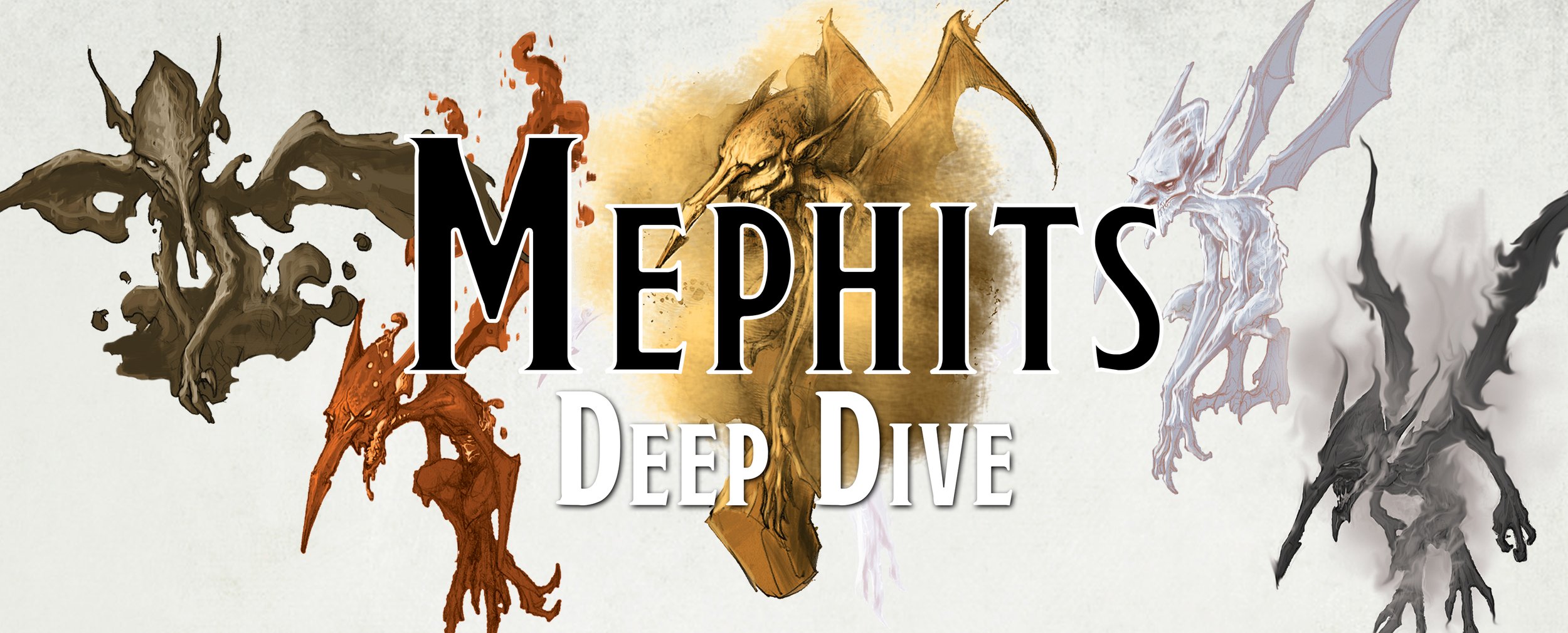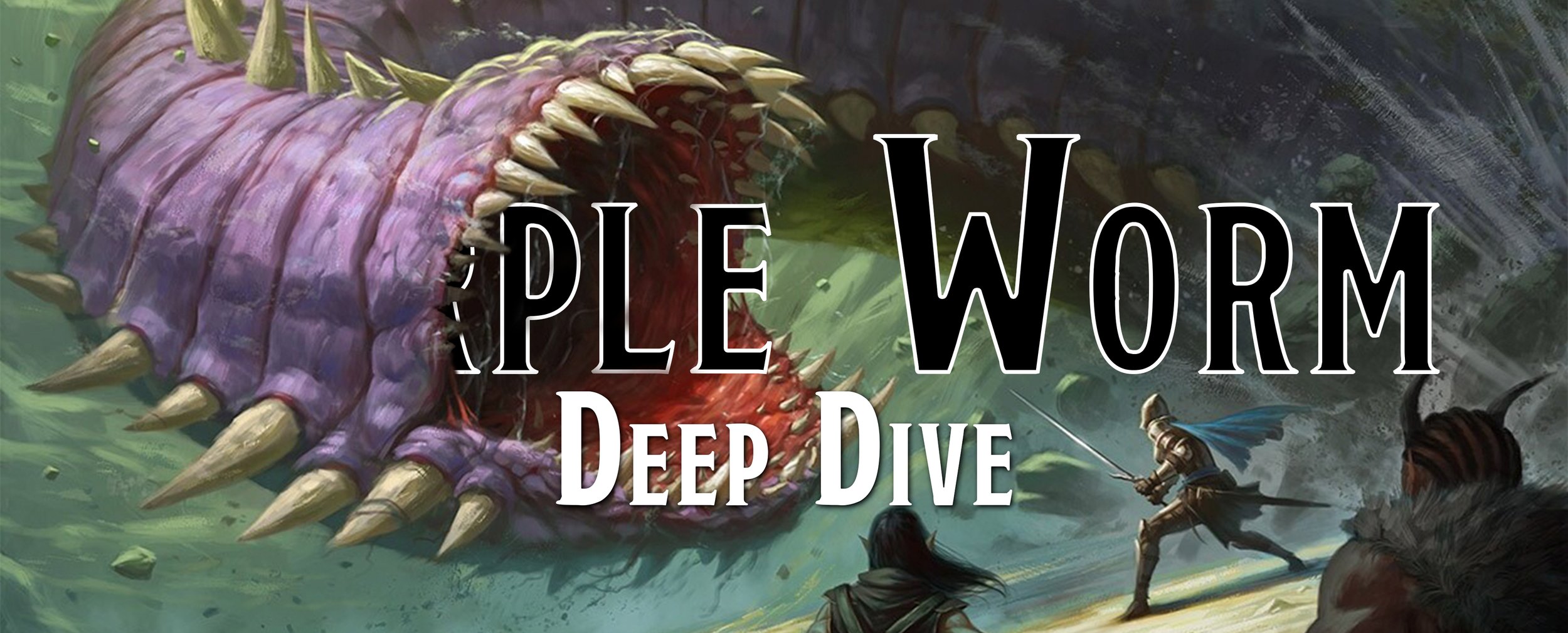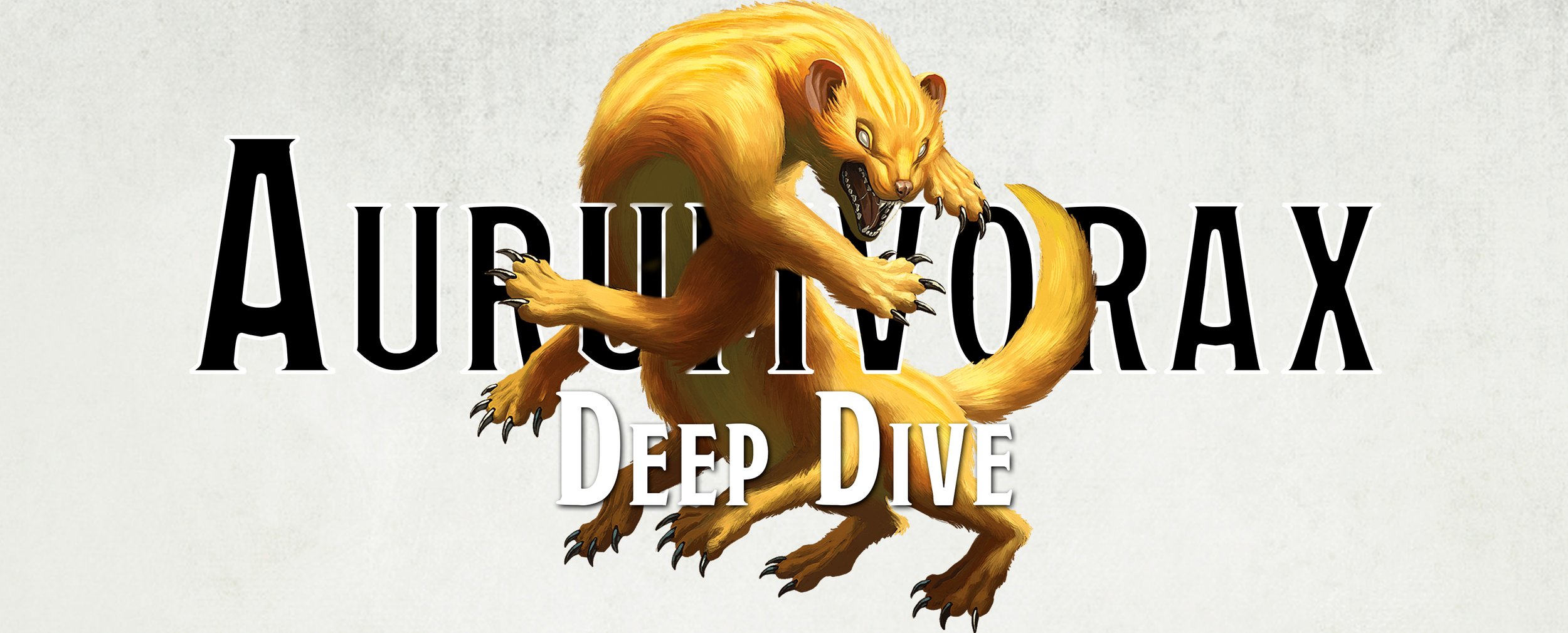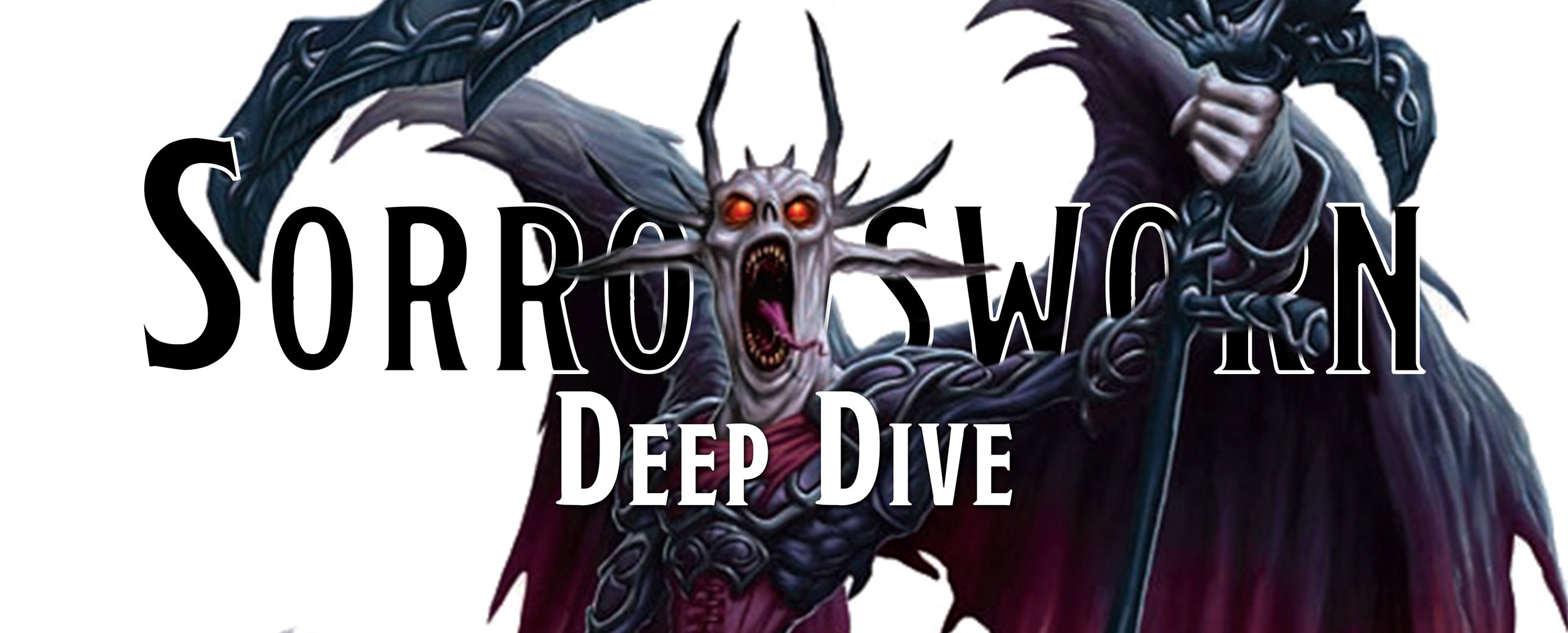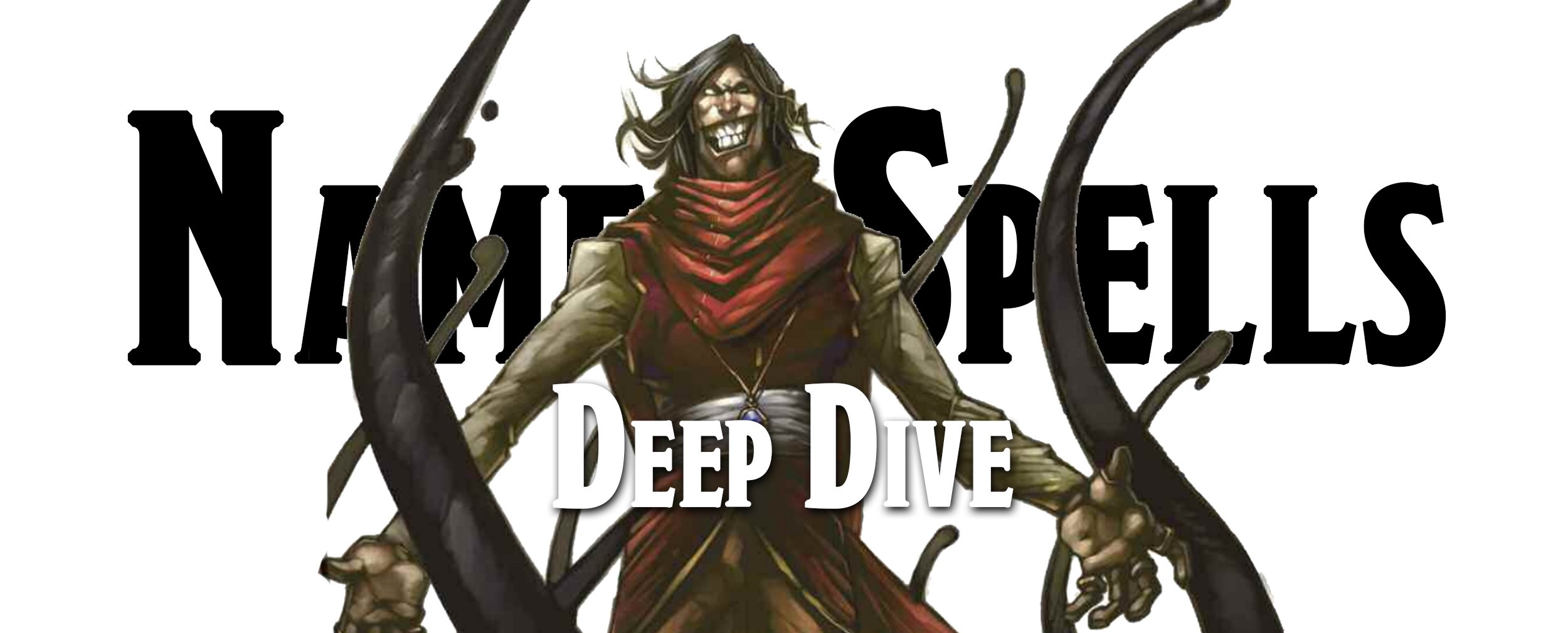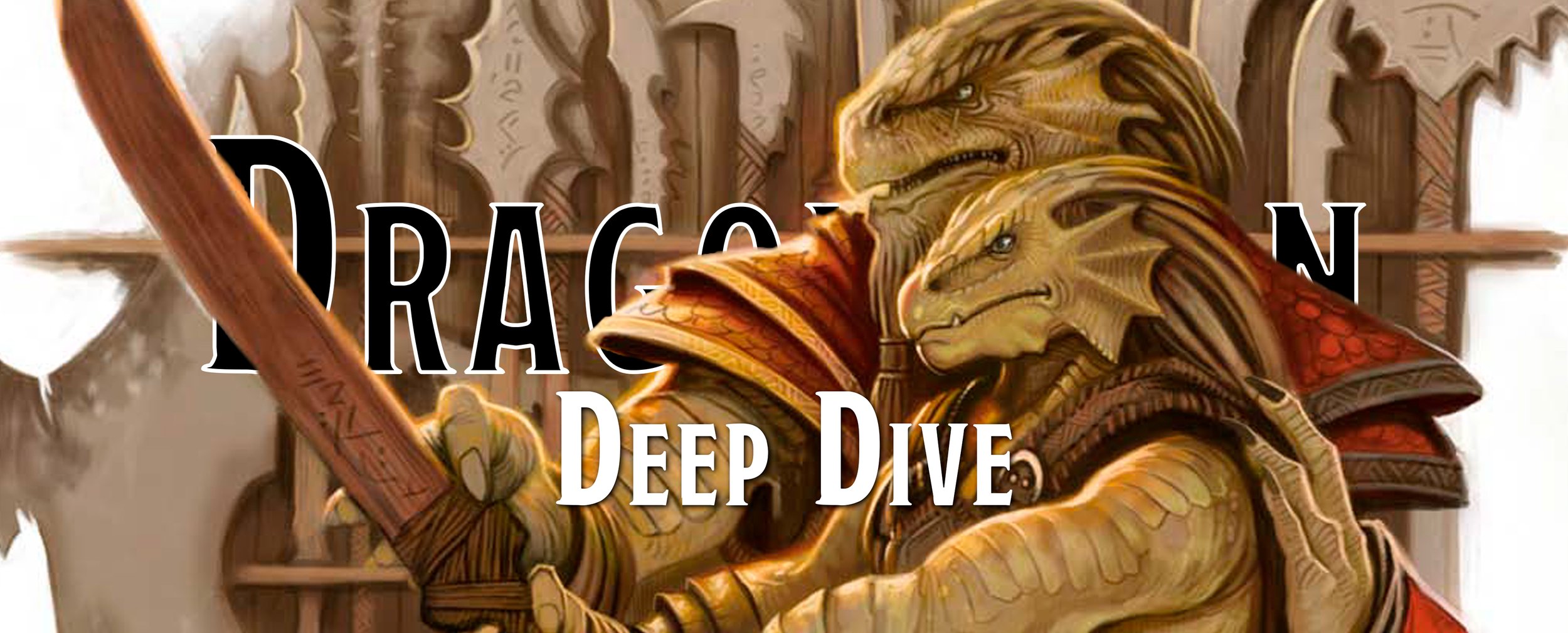Deep Dive - The Shield Guardian
There have been several guardian-type creatures in the history of D&D. Some were employed to guard treasure while others might guard holy sites or places. You can even find spells that summon a guardian to keep you protected, like guardian of faith which summons a spectral guardian to smack anyone that moves too close to its set location.
The Shield Guardian is one such protector and is probably the best protector that money can buy. Created by spellcasters to protect them, these constructs are bound to their masters by a magical amulet. With no concern for its well-being, the Guardian will take hit after hit, absorbing the damage that would typically cripple most wizards, warlocks, and others. Its only goal in life is to serve its master, punching its enemies in the face until someone steals its amulet and gives it new orders like to kill its old master.
3e/3.5e - Shield Guardian
Large Construct
Hit Dice: 15d10+30 (112 hp)
Initiative: +0
Speed: 30 ft. (6 squares)
Armor Class: 24 (–1 size, +15 natural), touch 9, flat-footed 24
Base Attack/Grapple: +11/+21
Attack: Slam +16 melee (1d8+6)
Full Attack: 2 slams +16 melee (1d8+6)
Space/Reach: 10 ft./10 ft.
Special Attacks: —
Special Qualities: Construct traits, darkvision 60 ft., fast healing 5, find master, guard, low-light vision, shield other, spell storing
Saves: Fort +5, Ref +5, Will +5
Abilities: Str 22, Dex 10, Con —, Int —, Wis 10, Cha 1
Environment: Any
Organization: Solitary
Challenge Rating: 8
Treasure: None
Alignment: Always neutral
Advancement: 16–24 HD (Large); 25–45 HD (Huge)
Level Adjustment: —
Monster Manual, 2003 WotC
The first appearance of the Shield Guardian is in the Monster Manual (2000/2003). This is one of the few monsters where we are OK with their origin story being that they were created by mad wizards because, well, Shield Guardians are constructs and like all constructs, they must first be built. The Shield Guardian is a large skinny creature made from wood, stone, metal, and magic. Don't let their thin frame fool you, as they are tough as nails.
For all the wizards out there, a Shield Guardian should be pretty high on your wants list, though you better have been saving up every copper piece since you began your adventuring career. Depending on whether you are referencing the 3e Monster Manual or the 3.5e Monster Manual, your costs are going to vary, but it is always expensive. In 3e, the cost is a flat 100,000 gp to build your Shield Guardian plus 1,000 gp to build an appropriate laboratory for it and then any extra money you have to spend to get any needed spell scrolls, like for limited wish and shield other. In 3.5e, the base price is only 65,000 gp plus 500 gp for a laboratory, a bit more reasonable you might think, but that only gets you the base model. If you want your Shield Guardian to survive combat and have more hit points, that’s an extra 5,000 gp for each additional Hit Die you give it. Then again, maybe you want to have a larger Guardian so that everyone knows not to mess with you, at which point, to make the Shield Guardian a huge creature, you have to pay another 20,000 gp.
Building a Shield Guardian also requires a bit more than just deep pockets, as you need a few special feats to craft constructs, wondrous magical items, and even work with metal, wood, and stone - though at least you can hire a blacksmith and mason to help out with the mundane constructions… which adds on to the cost of it all. You also have to be pretty high level, though there is some disagreement between 3e and 3.5e. In 3e you only need to be 12th level and be willing to spend 2,000 of your XP to give life to the Shield Guardian, while 3.5e requires you to be 15th level and spend 4,600 XP. On top of that, you also have to provide one casting of limited wish, discern location, shield, and shield other. If you qualify for all this, congrats you can spend a week crafting and create a best friend that will do whatever it can to protect you from all manner of harm.
Of course, if you’ve gone through all this work to craft the perfect best friend, how do you know it will listen to you and protect you from all danger? When you craft a Shield Guardian, you are also crafting an amulet that is innately bound to the construct. The Shield Guardian listens to only the person wearing the amulet, so it’ll be your best friend so long as you don’t lose the friendship necklace. If it is destroyed, the Shield Guardian essentially shuts off, and you'll need to make another amulet, which means coughing up another 20,000 gold pieces to control your best friend.
What does all your love, sweat, XP, and money get you? Your own personal Frankenstein that follows your commands to the best of its abilities. If you die with the amulet in your possession, the Shield Guardian will do everything possible to complete your dying wish, like kill those awful murderhobos that intruded upon your wizard tower. Unfortunately, if you were hoping for stimulating conversation, it will understand everything you say, but it can’t talk back, so no late-night heart-to-heart conversations. You'll never lose it since its Find Master abilities allow it to track down the amulet's wearer as long as you're on the same plane. The Shield Guardian's primary, and only, goal is precisely what its name implies. It will act as your shield, absorbing all the damage from which your frail wizard body would wither from. Well, not all of it as any damage you take is evenly divided between your frail wizard body and the construct.
The Guardian is more of a defender than an attacker, though it can attack a bit with its fists. Still, it prefers to stand nearby and use its Guard ability. So long as the Guardian is adjacent to you, attackers take a penalty to their attacks, probably because this 9-foot-tall construct is quite intimidating. Of course, you could just hire a bunch of minions with that same money and be even more protected, but it does have one more ability. You can cast up to a 4th-level spell into the Shield Guardian, and the spell is stored until you command the Shield Guardian to unleash it or you set up a predetermined trigger, at which point the spell will go off once that trigger happens. Maybe you'll decide to store another fireball spell, or perhaps you'll have the cleric store a healing spell. We're sure you'll promise to use it on whoever needs it the most, which will always be you.
Monster Manual II, 2002 WotC
Perhaps you’ve looked over the Shield Guardian and thought, for the price, you just weren’t getting that much. Luckily you have options, as the Runic Guardian appears in Monster Manual II (2002), which is what happens when a wizard wants a Shield Guardian that will only serve them, use more magic, take more damage, and is just better in almost every way. A Runic Guardian appears like a Shield Guardian but is made of stone, steel, and lead. Its arms are hollowed out and filled with lead so they are more deadly and have the chance to stun you on a hit, we guess cause they are heavier now, and they are so well defended that they have Damage Resistance 30 against all physical attacks unless you have a +3 or better weapon. If you do happen to damage the creature, it will heal itself 10 points of damage at the start of its turn, which is twice what the Shield Guardian can heal itself.
Unlike the lesser Shield Guardian, a Runic Guardian can have up to six spells cast into its body, but these must be done at the time of its creation. Once it is done being built, those spells can not be changed. Each of the six spells have a specific location that can be placed into the Guardian and a maximum level they can be. The head can have a 1st-level spell, the arms 2nd-level, legs 3rd-level, and the torso gets the 5th-level spell. Each spell can be cast once per day and can be offensive or defensive, completely up to the creator of the Guardian.
The Runic Guardian also has the normal protections that a Shield Guardian offers, except just a bit better. Its shield master ability allows it to take three-fourths of the damage that its controller would take and it functions while it is up to 150 feet away instead of only 100 feet. It can even teleport once per day to its master, with no chance of the teleport going awry, it just immediately shows up where it is supposed to be. This begs the question, does it have an amulet you can steal from a wizard and claim the Guardian as your new best friend? Well yes, and no.
The Guardian has an amulet, or ring, that is a bonded object to it, though it is only used to help it teleport to its master in a time of need and that’s about it. The Runic Guardian is, when it is created, permanently attached to one creature that its creator designates right before it is finished. Any who try to take the amulet or ring, and pretend to be its master, are immediately attacked by the Runic Guardian as it apparently doesn’t care for liars or thieves.
For those who want to make this powerful protector, you better have even deeper pockets than before. It costs 200,000 gp to create one of these, requires harder checks to craft its body from stone and metal, and you have to be, at minimum, a 16th-level caster with the same feats as before and you need a more expensive laboratory that costs 2,000 gp to establish and build. We can’t wait for our fabulously wealthy BBEG to start producing an army of these Guardians.
The last Guardians we will look at in this edition come from an unusual source. Found in the Complete Warrior (2003), we have three minor Guardians that you can create and use to protect the weak and frail spellcasters who think that Constitution is a dump stat. These Guardians are treated like a familiar, though they must first be built and if they are destroyed, you don’t have to wait a year and a day before you can get a new one.
Complete Warrior, 2003 WotC
The three options you can build are the Spark Guardians, Gauntlet Guardians, and Blade Guardians, though each one is a more powerful form than the one before it and requires more money, more magic, and a higher level spellcaster to create them. Luckily, because they are familiars, there is no amulet you have to worry about someone stealing, they all just know you are their master and can always locate you no matter where you are if you are on the same plane as them.
The Spark Guardian is a tiny construct that is in the shape of a bird and can fly about, showering your enemies with sparks. It isn’t terribly impressive, but who else can say they spent 7,000 gp and 400 XP building a best friend that is a mechanical bird that shoots lightning bolts? You can spend an extra 1,000 gp for every additional Hit Die you give the bird and even spend 5,000 gp to turn it into a medium-sized bird construct. It typically stays high up in the air, blasting creatures with lightning from a distance and requires you to cast lightning bolt into the construct during its creation.
Complete Warrior, 2003 WotC
The Gauntlet Guardian is a small construct that looks like a big punching robot with a few decorative spikes. They are known for punching anyone that gets close to their masters and don’t change their focus until you look like a puddle of meat and broken bone, or their master calls it off the attack. If you spend 11,500 gp and 800 XP, you get a construct made of brass, stone, and steel, and you can finally cast a spell into your Guardian, though it can only be up to 2nd-level. By spending an extra 2,000 gp you can increase its number of Hit Dice and 10,000 gp increases its size to Medium. You do have to be 9th-level and able to cast stone shape and fabricate, but those are small costs for building a Guardian that goes around swinging every time someone tries to pick a fight with you, which could happen often if you are a jerk.
Complete Warrior, 2003 WotC
The last Guardian is the Blade Guardian, and it is a medium construct made of spinning blades and sharp, pointy spikes all over its body. These Guardians cost 18,000 gp and 1,200 XP, require a casting of tenser’s transformation, you have to be 11th-level and you better have a strong stomach that doesn’t care about seeing blood and viscera sprayed everywhere once the construct attacks. Of all the constructs here, these are built specifically to fight and do so quickly, leaping into conflict with spinning blades. You can even store a 3rd-level spell in them, like fireball, and watch as they detonate, clearing a room of enemies. They even get the Guard ability of real Shield Guardians, proving to everyone that they aren’t just a baby wizard’s first Shield Guardian, but rather dangerous and powerful familiars on their own merits.
4e - Shield Guardian
Level 14 Soldier
Large natural animate (construct) / XP 1,000
Initiative +9 / Senses Perception +15; darkvision
Shield Other aura 2; as long as its master is within the aura, the shield guardian grants its master a +2 bonus to all defenses and takes half of its master’s damage until it is destroyed
HP 138; Bloodied 69
AC 30; Fortitude 29, Reflex 22, Will 27
Immune charm, disease, fear, poison, sleep
Speed 4
Slam (standard; at-will) Reach 2; +20 vs. AC; 2d6 + 7 damages.
Alignment Unaligned / Languages -
Str 24 (+14) Dex 10 (+7) Wis 16 (+10) Con 18 (+11) Int 7 (+5) Cha 9 (+6)
Monster Manual, 2008 WotC
After a strong start, the Shield Guardian is reduced to just another construct in the Monster Manual (2008). This book contains the basic Shield Guardian and its bigger sibling, the Battle Guardian. The Guardian is still bound to you by an amulet, but thankfully there is no cost in the text, though we’re sure any GM would be more than happy to stamp a 200,000 gp cost to these constructs. As long as you have the amulet, the Shield Guardian is yours to control until your demise. Upon your death, it continues to carry out your last order, until someone rips the amulet from your cold dead body, and provides it new orders - like to bury its previous, very dead master.
The Shield Guardian loses out on several of its abilities like it can no longer innately find its master and you can’t store spells or powers within its body. It can punch you with its massive fists still and offers protection to its master so long as it stays within 10 feet. You gain a bonus to all of your defenses, which would include your saving throws and Armor Class, and it takes half of all of your damage until it is destroyed. Luckily, it has 138 hit points so you have a small buffer before your very expensive investment is destroyed.
The Battle Guardian is stronger than the Shield Guardian in many ways. Its slam attacks are more powerful and can immobilize its enemies with a single blow. The Battle Guardian can also rush towards enemies of its master with its Block Charge ability, slamming into you with iron fists and knocking you prone so you don’t even dare to think to get close to its master. While the Battle Guardian won’t absorb damage for you, you won’t take attacks of opportunity while next to it, so it’s a good opportunity to quickly run away from your enemies while the Guardian covers your retreat.
The Shield Guardian and Battle Guardian appear throughout a few adventures, mostly just as fodder to keep you from killing the story’s BBEG, but they do appear in the adventure collection book Dungeon Delve (2009). This book offers a wide variety of weird, odd, and tactically difficult fights to throw at your party, including one encounter where the party must fight three dragonborn followers of Tiamat who had dug up a blue dragon to help in their nefarious plans. What makes this encounter brilliant is that the dragonborn who possesses the amulet has a standing order to destroy the amulet when they are slain. That’s something to keep in mind if you don’t want someone to play with your toys when you’re dead.
5e - Shield Guardian
Large construct, unaligned
Armor Class 17 (natural armor)
Hit Points 142 (15d10 + 60)
Speed 30 ft.
Str 18 (+4) Dex 8 (-1) Con 18 (+4) Int 7 (-2) Wis 10 (+0) Cha 3 (-4)
Damage Immunities poison
Condition Immunities charmed, exhaustion, frightened, paralyzed
Senses blindsight 10 ft., darkvision 60 ft., passive Perception 10
Languages understands commands given in any language but can’t speak
Challenge 7 (2,900 XP)
Bound. The shield guardian is magically bound to an amulet. As long as the guardian and its amulet are on the same plane of existence, the amulet’s wearer can telepathically call the guardian to travel to it, and the guardian knows the distance and direction to the amulet. If the guardian is within 60 feet of the amulet’s wearer, half of any damage the wearer takes (rounded up) is transferred to the guardian.
Regeneration. The shield guardian regains 10 hit points at the start of its turn if it has at least 1 hit point.
Spell Storing. A spellcaster who wears the shield guardian’s amulet can cause the guardian to store one spell of 4th level or lower. To do so, the wearer must cast the spell on the guardian. The spell has no effect but is stored within the guardian. When commanded to do so by the wearer or when a situation arises that was predefined by the spellcaster, the guardian casts the stored spell with any parameters set by the original caster, requiring no components. When the spell is cast or a new spell is stored, any previously stored spell is lost.
Multiattack. The guardian makes two fist attacks.
Fist. Melee Weapon Attack: +7 to hit, reach 5 ft., one target. Hit: 11 (2d6 + 4) bludgeoning damage.
Shield (Reaction). When a creature makes an attack against the wearer of the guardian’s amulet, the guardian grants a +2 bonus to the wearer’s AC if the guardian is within 5 feet of the wearer.
Monster Manual, 2014 WotC
In the Monster Manual (2014), the Shield Guardian gets many of its old abilities back, though it is rather lonely. There are no fancy versions of the Shield Guardian, so you better be content with the base model. It does draw from 3rd edition, adding a few twists of its own, which makes the Shield Guardian a must-have for wizards and other spellcasters. Sorry owl familiars everywhere, you've been replaced.
Unfortunately, there is no creation process described for the Shield Guardian, but we do know that an amulet is still required to bind the Guardian to its master. It takes a week to create and a mere 1,000 gold pieces. That's not much, especially given this edition's state of the gold economy. That’s probably why industrious wizards are known for constantly creating Shield Guardians, and a corresponding amulet, and selling them to the highest bidder. Plenty of kings, nobles, and less savory types would be willing to purchase one regardless of the cost. Of course, if you purchase one of these amulets, and lose it, you’ll have to cough up another 1,000 gp and whatever mark-up the wizard charges to get a replacement.
If you get in a fight, watch out as the Shield Guardian not only flails about with its fists, but a spell of up to 4th-level can be stored within it. It can then use that spell when commanded or if there is a predetermined trigger, like invading adventurers assume lightning bolt formation. Only the amulet's wearer can now put the spell inside the Shield Guardian, so if you are a wizard wearing the amulet, this means no more emergency heal spell, unless you trust a cleric to take control of your construct for a few hours while they attune to the amulet and gain control of a best friend that will do whatever they say.
Icewind Dale: Rime of the Frostmaiden, 2020 WotC
Once again, the Shield Guardian's sole purpose is to ensure its master keeps breathing. It is always on the alert and keeps you out of harm's way since it does not need to eat, drink, breathe, or sleep. If you're a believer in the adage the best defense is a good offense, you can have it attack with its big old fists. It also will absorb half of all damage you take so long as you remain within 60 feet of it, which doesn’t ensure you are out of danger, but it’s better than having to remain within 10 feet of it.
If you are worried that you are going to take a lot of damage, maybe because you annoyed a group of murderhoboing adventurers, fear not as the Shield Guardian will regenerate ten hit points every round as long as it still has at least 1 hit point. While we're happy for the Shield Guardian, deep down, we know this means you'll be taking more risks since you, through the Guardian, can take more abuse.
While the Shield Guardian appears throughout a few adventures, they sadly get no older siblings or special familiars you can build, unless you count the artificer’s steel defender. It can offer some protection to you, but it’s not like you could sell it or switch over ownership when you die to whoever killed you with a handy amulet.
Waterdeep: Dragon Heist, 2018 WotC
With a reputation for protecting cowardly spellcasters behind fists of iron and wood, the Shield Guardian is a fearsome protector. Not only does it link its hit points with yours, but you can even power it up with magic or have it sacrifice itself in the noble pursuit of keeping you alive. We fully believe that a Shield Guardian is worth the time and financial investment of building, so long as the master remembers to keep their amulets safe and away from any sneaky thieves.































